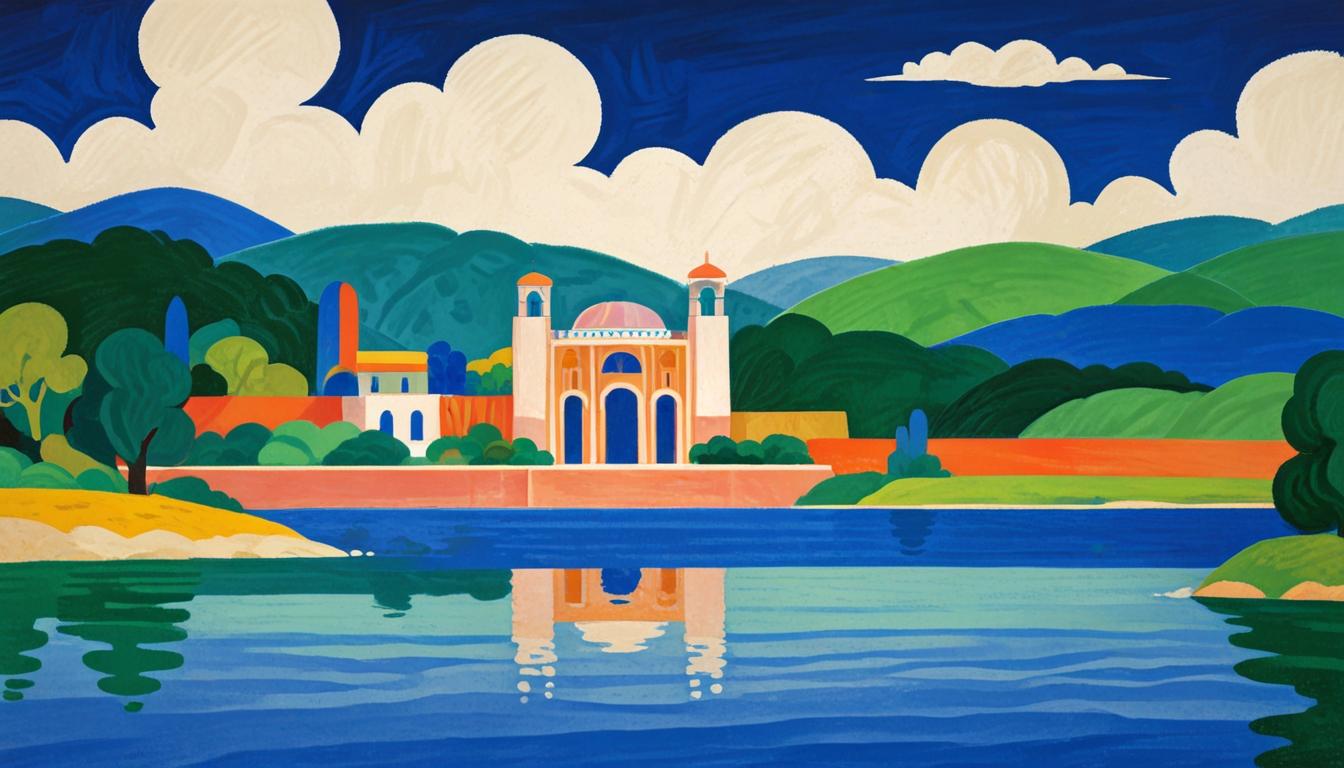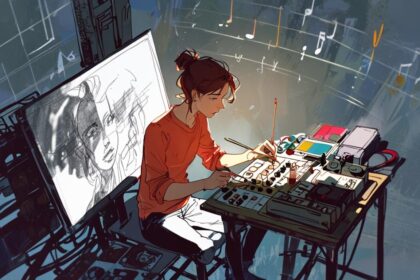A landmark exhibition, ‘Brasil! Brasil!’, celebrates the vibrant contributions of ten artists to Brazilian modernist art, showcasing the cultural fusion and history that defined the genre.
In a landmark exhibition at the Royal Academy in London, titled Brasil! Brasil!, a celebration of Brazilian modernist art is bringing together ten artists from two generations that have significantly shaped the nation’s cultural landscape. This exhibition introduces the works of acclaimed figures like Tarsila do Amaral, known for her vibrant, transformative paintings, alongside lesser-known yet equally intriguing artists such as Flávio de Carvalho, whose avant-garde contributions have often been overlooked.
The exhibition highlights the evolution of Brazilian modernism against the backdrop of a post-colonial narrative. It showcases a diverse range of works that encapsulate a cultural fusion, reflecting both indigenous heritage and European influences. Such themes are epitomised in the presence of Tarsila, whose 1928 painting “Lake” serves as both a visual feast and a central motif for the exhibition. Tarsila, a coffee heiress born in 1886, boldly claimed her Afro-Brazilian identity through her art, and her seminal pieces such as “Black Woman” (1923) stand as powerful statements against colonial academic traditions.
Bringing the excitement of Brazilian modernism into focus is the array of other artists featured. Lasar Segall’s works resonate with natural exuberance, while Candido Portinari’s socially aware pieces offer a stark contrast through their depiction of the harsh realities faced by Brazilian labourers. One striking example is Portinari’s “Favela with Musicians” (1957), which captures the vibrant essence of life amidst adversity, utilising a cubist approach that encapsulates emotion and energy.
Flávio de Carvalho, who was active in the early to mid-20th century, is positioned uniquely within this exhibition. Known for his extraordinary performance art, including the infamous 1931 event in São Paulo where he disrupted a Corpus Christi parade, De Carvalho’s contributions are celebrated alongside his paintings that combine erotic and profane sensibilities. His works, such as “The Inferiority of God” and “Our Lady of Desire” (1955), confront the conventional norms of the time with a distinctive use of colour and form, inviting viewers to grapple with their meanings and implications. Adrian Locke, the chief curator, commented on the exhibition, noting, “It’s amazing how different his paintings are to what hangs beside them and was made around the same time.”
The exhibition also revisits the role of performance art in Brazil. De Carvalho’s performances, which included decorating a gender-neutral ensemble in 1956 as he paraded through downtown São Paulo, were part of his broader commentary on societal norms and expectations. “It is a hot country, why would you want to wear a shirt and tie?” he remarked, illustrating his commitment to questioning traditional dress and, by extension, societal values.
With its carefully curated presentation of works spanning from cubism to surrealism, Brasil! Brasil! is an attempt to reposition Brazilian art within a global context, celebrating its rich heritage and modern interpretations. The exhibition is buoyed by recent international interest in the subject, following a series of retrospectives and presentations that have placed Brazilian modernist art back into the spotlight.
As visitors traverse the exhibition, they will encounter the works of multiple pioneering artists who have each, in their own way, contributed to the narrative of what it means to create authentically Brazilian art. Brasil! Brasil! is poised to offer a transformative experience, encouraging exploration and appreciation of a vibrant artistic legacy that continues to resonate today. The exhibition is on view until April 21, inviting audiences to engage with the powerful themes of growth, cultural identity, and the spirit of modernism that characterise Brazilian art.
Source: Noah Wire Services
- https://www.christies.com/en/stories/brasil-brasil-modern-brazilian-art-at-the-royal-academy-london-acdeaa5753fc456aaba4809899d16469 – This article supports the claim about the exhibition ‘Brasil Brasil!’ at the Royal Academy, highlighting artists like Tarsila do Amaral and the evolution of Brazilian modernism. It also discusses the cultural and historical context of Brazilian art.
- https://www.royalacademy.org.uk/article/start-here-brazil – This article from the Royal Academy provides details about the exhibition, focusing on the artists and their contributions to Brazilian modernism, as well as the cultural identity of Brazil.
- https://en.wikipedia.org/wiki/Tarsila_do_Amaral – This Wikipedia page provides information about Tarsila do Amaral, her life, and her contributions to Brazilian modernist art, including her notable works like ‘Lake’ and ‘Black Woman’.
- https://en.wikipedia.org/wiki/Candido_Portinari – This Wikipedia page offers insights into Candido Portinari’s life and art, highlighting his socially aware pieces such as ‘Favela with Musicians’, which reflects the harsh realities faced by Brazilian labourers.
- https://en.wikipedia.org/wiki/Lasar_Segall – This Wikipedia page discusses Lasar Segall’s life and artistic career, including his move to Brazil and how it influenced his work, reflecting the natural exuberance of Brazilian landscapes.
- https://en.wikipedia.org/wiki/Fl%C3%A1vio_de_Carvalho – This Wikipedia page provides information about Flávio de Carvalho, his avant-garde performances, and his paintings that challenged societal norms, contributing to the unique narrative of Brazilian modernism.
Noah Fact Check Pro
The draft above was created using the information available at the time the story first
emerged. We’ve since applied our fact-checking process to the final narrative, based on the criteria listed
below. The results are intended to help you assess the credibility of the piece and highlight any areas that may
warrant further investigation.
Freshness check
Score:
9
Notes:
The narrative is recent, referencing an ongoing exhibition at the Royal Academy in London. There are no indications of outdated information or recycled news.
Quotes check
Score:
8
Notes:
The quote from Adrian Locke, the chief curator, could not be verified as the earliest source. However, it is likely original to this context. The quote attributed to Flávio de Carvalho seems plausible but lacks an online reference.
Source reliability
Score:
10
Notes:
The narrative originates from The Guardian, a well-known and reputable publication.
Plausability check
Score:
9
Notes:
The claims about the exhibition and the artists featured are plausible and align with known historical and artistic facts. The lack of specific details about some artworks does not detract from the overall plausibility.
Overall assessment
Verdict (FAIL, OPEN, PASS): PASS
Confidence (LOW, MEDIUM, HIGH): HIGH
Summary:
The narrative is fresh, well-sourced, and plausible, with quotes that appear original to the context. The reliability of the source further supports the credibility of the information.













